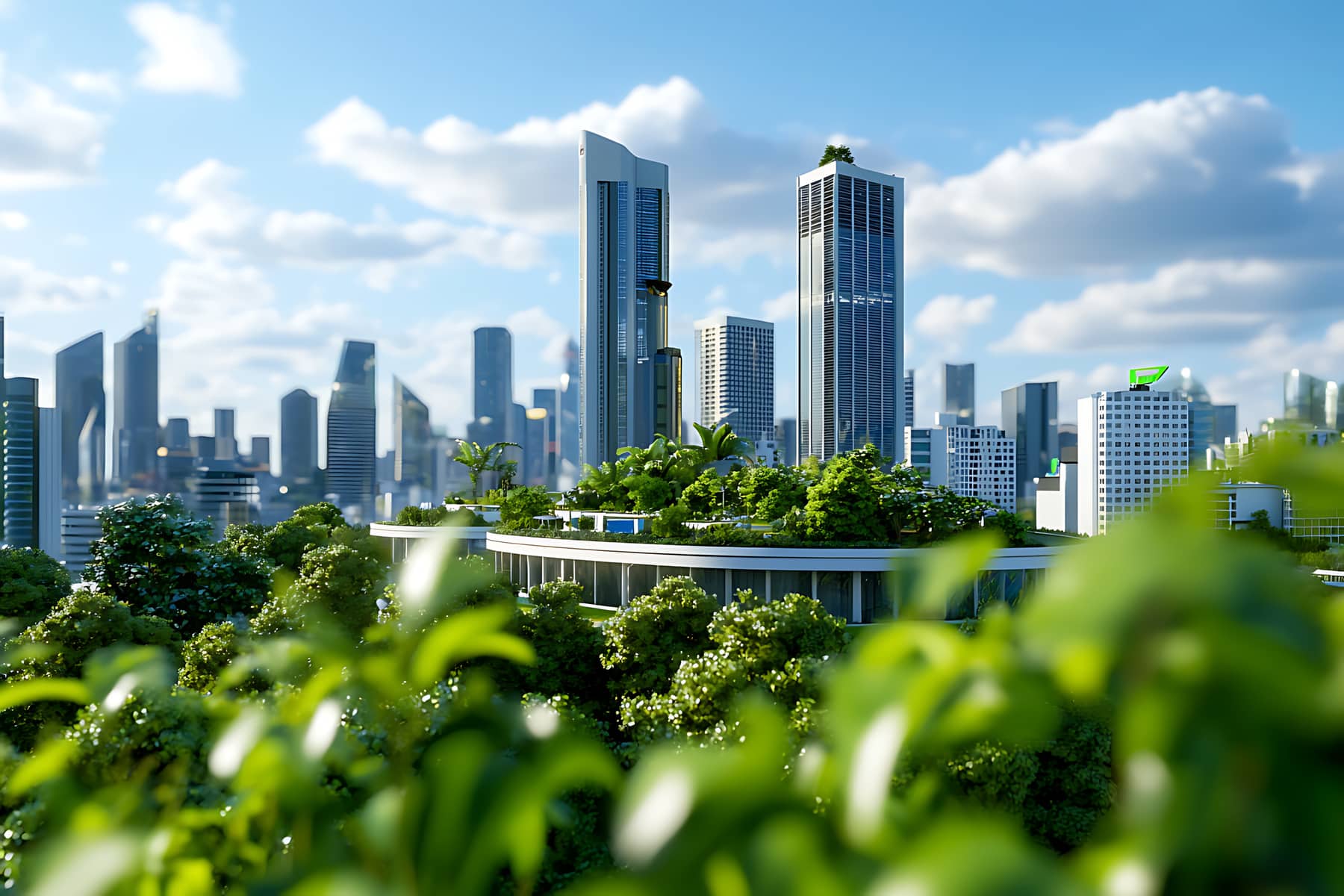
Smart City Initiatives for Sustainable Urban Living
Smart cities are transforming urban living by integrating advanced technologies to enhance sustainability and efficiency. From intelligent transportation systems to energy-efficient buildings, these innovations aim to create environments that are both livable and environmentally friendly. Central to these advancements are various sensors and control systems that monitor and manage city infrastructure. Among these, air velocity sensors play a crucial role in maintaining optimal climate conditions and ensuring high air quality in public spaces. By leveraging these technologies, cities can achieve significant improvements in resource management and quality of life for their residents.
Intelligent Transportation Systems
Efficient transportation is a cornerstone of smart city initiatives. Intelligent transportation systems (ITS) utilize data from various sources to manage traffic flow, reduce congestion, and enhance public transit services. Traffic lights equipped with sensors can adjust signal timings based on real-time traffic conditions, ensuring smoother vehicle movement and reducing idle times. Additionally, ITS can provide commuters with up-to-date information on transit schedules and traffic conditions through mobile applications. This not only improves the overall efficiency of the transportation network but also contributes to lower emissions by minimizing unnecessary stops and starts. By integrating these systems, cities can create a more responsive and adaptive transportation infrastructure that meets the needs of its inhabitants.

Sustainable Energy Solutions
Transitioning to renewable energy sources is vital for the sustainability of smart cities. Solar panels, wind turbines, and other renewable energy technologies are increasingly being integrated into urban infrastructures. Smart grids manage the distribution and consumption of energy more effectively by using real-time data to balance supply and demand. Additionally, energy storage systems ensure that excess energy generated during peak production times is stored for later use, enhancing the reliability of renewable sources. By embracing these sustainable energy solutions, cities can reduce their dependence on fossil fuels, lower greenhouse gas emissions, and promote a more resilient energy infrastructure. This shift not only supports environmental goals but also fosters economic growth through the creation of green jobs and industries.
Advanced Waste Management
Effective waste management is another critical component of smart city initiatives. Advanced waste management systems utilize sensors and data analytics to optimize collection routes, reduce operational costs, and minimize environmental impact. Smart bins equipped with fill-level sensors notify waste collection services when they need to be emptied, preventing overflow and reducing unnecessary pickups. Additionally, data from these sensors can be analyzed to identify waste generation patterns, allowing cities to implement targeted recycling programs and waste reduction strategies. By improving the efficiency of waste management, cities can enhance their cleanliness, reduce pollution, and promote sustainable practices among residents. This not only contributes to a healthier urban environment but also supports the broader goals of sustainability and resource conservation.
Energy-Efficient Buildings
Buildings consume a significant portion of urban energy, making energy-efficient designs essential for sustainable cities. Smart buildings incorporate technologies such as automated lighting, heating, and cooling systems to optimize energy usage. Building Management Systems (BMS) monitor various parameters, including temperature, humidity, and occupancy levels, to adjust settings in real-time. Incorporating air velocity sensors into these systems allows for precise control of airflow, ensuring that ventilation is both effective and energy-efficient. This not only enhances indoor air quality but also reduces the overall energy consumption of the building. By implementing these advanced systems, cities can significantly lower their carbon footprint and promote a healthier living environment for residents.
Key Benefits of Smart City Technologies
Implementing smart city technologies offers numerous advantages that contribute to sustainable urban living:
- Improved Energy Efficiency: Optimizing energy usage in buildings and infrastructure reduces overall consumption and lowers carbon emissions.
- Enhanced Air Quality: Advanced sensors, including air velocity sensors, help maintain clean and healthy air in public spaces.
- Reduced Traffic Congestion: Intelligent transportation systems streamline traffic flow, minimizing delays and emissions.
- Cost Savings: Efficient resource management lowers operational costs for city services and infrastructure maintenance.
- Increased Public Safety: Real-time monitoring and rapid response systems enhance the safety and security of urban environments.
- Better Quality of Life: Smart technologies create more livable cities with improved services, cleaner environments, and greater convenience for residents.
- Sustainable Growth: Supporting green initiatives and renewable energy fosters long-term economic and environmental sustainability.
Ensuring Public Health and Safety
Public health and safety are paramount in smart city planning. Advanced monitoring systems track environmental conditions, such as air quality, noise levels, and temperature, to ensure a safe and healthy living environment. Air velocity sensors, for example, are essential in detecting and managing air pollutants by optimizing ventilation systems in public spaces. This proactive approach helps prevent the spread of airborne contaminants and reduces the risk of respiratory issues among residents. Additionally, smart surveillance systems enhance security by providing real-time monitoring and rapid response capabilities. By prioritizing public health and safety, smart cities can create resilient communities that are well-equipped to handle both everyday challenges and unexpected emergencies.
Transform Your City with Smart Technologies
Adopting smart city technologies is essential for building sustainable and efficient urban environments. Air velocity sensors, with their ability to monitor and manage airflow, are indispensable tools in this transformation. By integrating these sensors into various systems, you can ensure optimal performance, enhance air quality, and reduce energy consumption. Take the initiative to implement these advanced solutions and contribute to the creation of a smarter, more sustainable city that benefits everyone.

Frequently Asked Questions
What are air velocity sensors used for in smart cities?
Air velocity sensors monitor the speed and direction of airflow, enabling precise control of ventilation systems and improving air quality in public buildings and transportation hubs.
How do air velocity sensors contribute to energy efficiency?
By providing real-time data on airflow, these sensors allow systems to adjust ventilation and climate control settings, reducing unnecessary energy consumption.
Can air velocity sensors be integrated with other smart city technologies?
Yes, air velocity sensors can seamlessly integrate with Building Management Systems (BMS) and IoT devices to enhance overall urban infrastructure management.
What are the benefits of using air velocity sensors in public transportation?
They ensure optimal ventilation in transportation hubs, improving commuter comfort and reducing the spread of airborne pollutants.
Are air velocity sensors easy to install and maintain?
Yes, they are designed for straightforward installation and require minimal maintenance, making them a practical addition to existing systems.
Which public buildings benefit most from air velocity sensors?
Air velocity sensors are particularly beneficial in offices, schools, hospitals, and municipal buildings where maintaining air quality is crucial.
How do air velocity sensors improve indoor air quality?
They monitor and adjust airflow to ensure adequate ventilation, removing stale air and introducing fresh air to maintain a healthy indoor environment.
Enhancing smart cities with advanced technologies like air velocity sensors is key to achieving sustainable urban living. These sensors not only optimize climate control and improve air quality but also contribute to the overall efficiency and resilience of city infrastructures. By integrating such innovations, cities can provide a higher quality of life for their residents while minimizing their environmental impact. Embracing these smart solutions paves the way for a greener, more efficient, and healthier urban future.
image sources:
ryker – stock.adobe.com
Artinun – stock.adobe.com
well – stock.adobe.com


